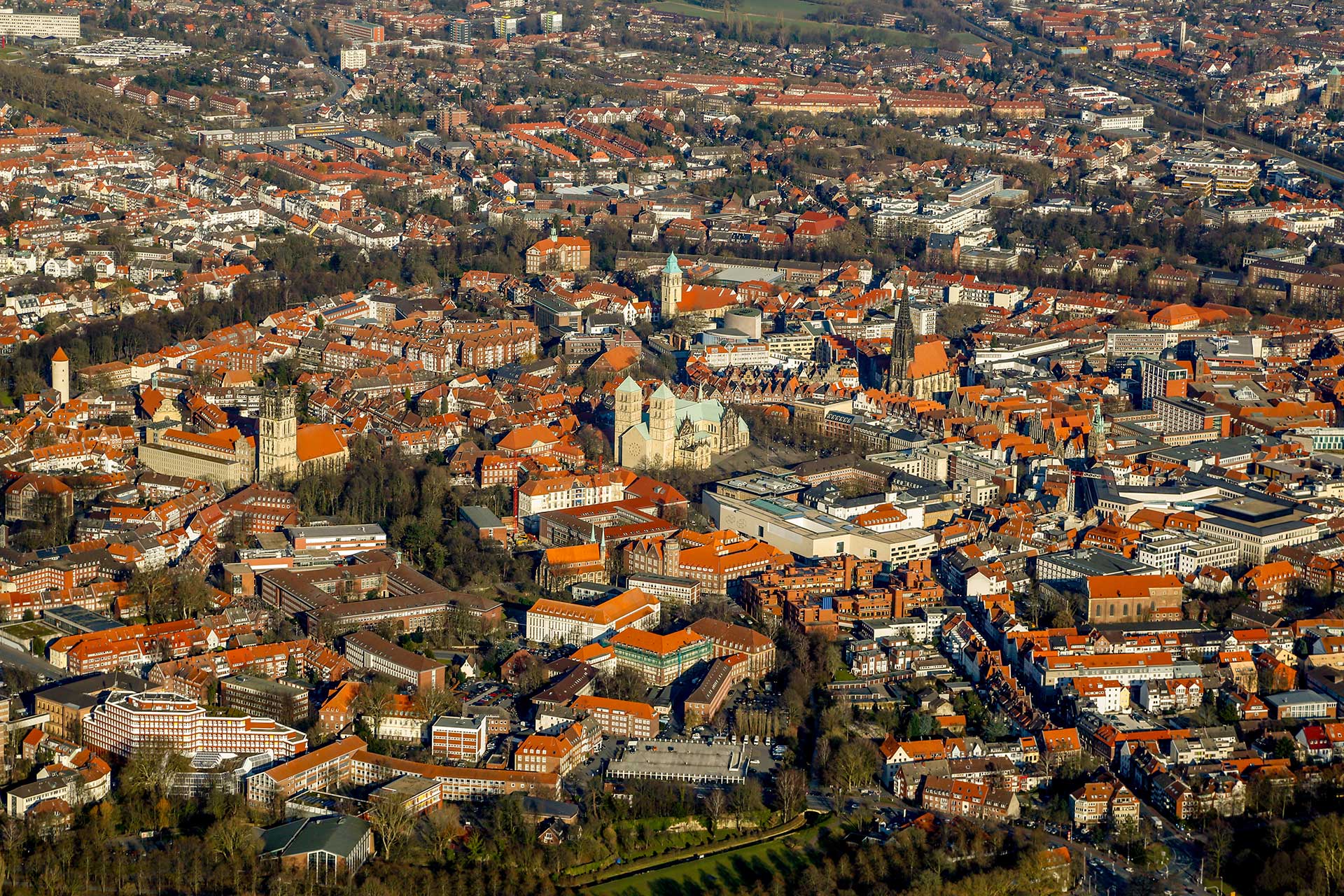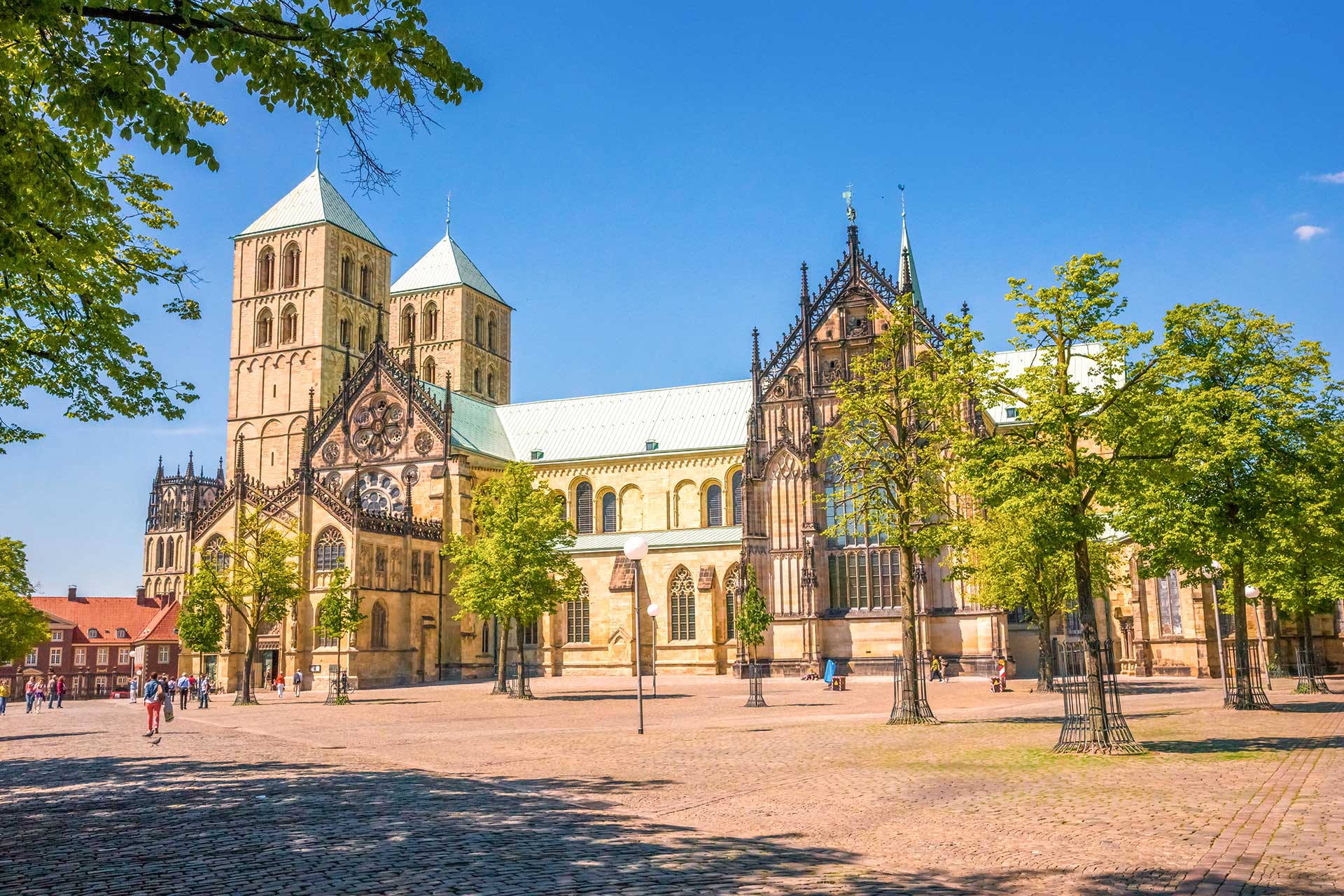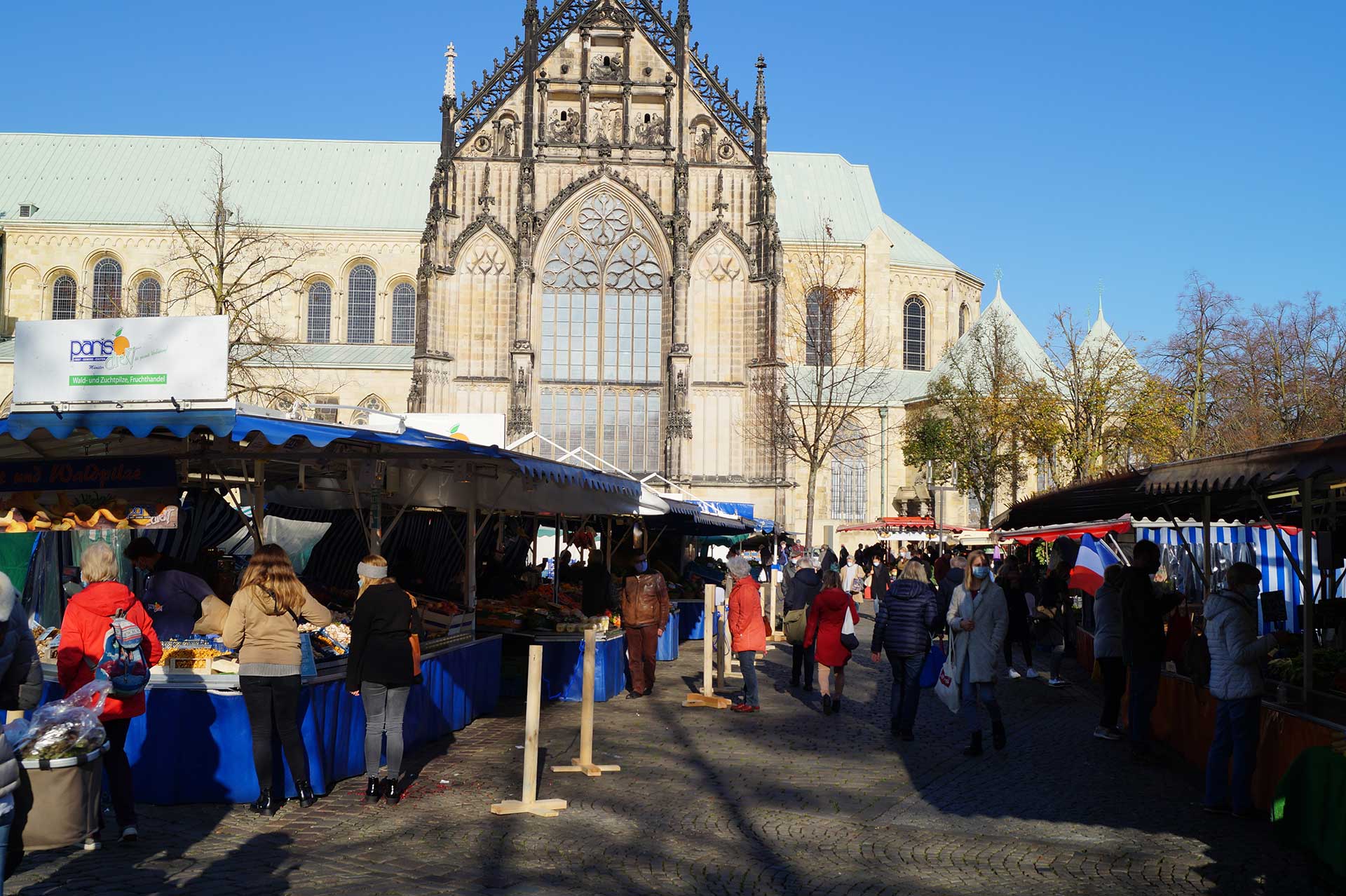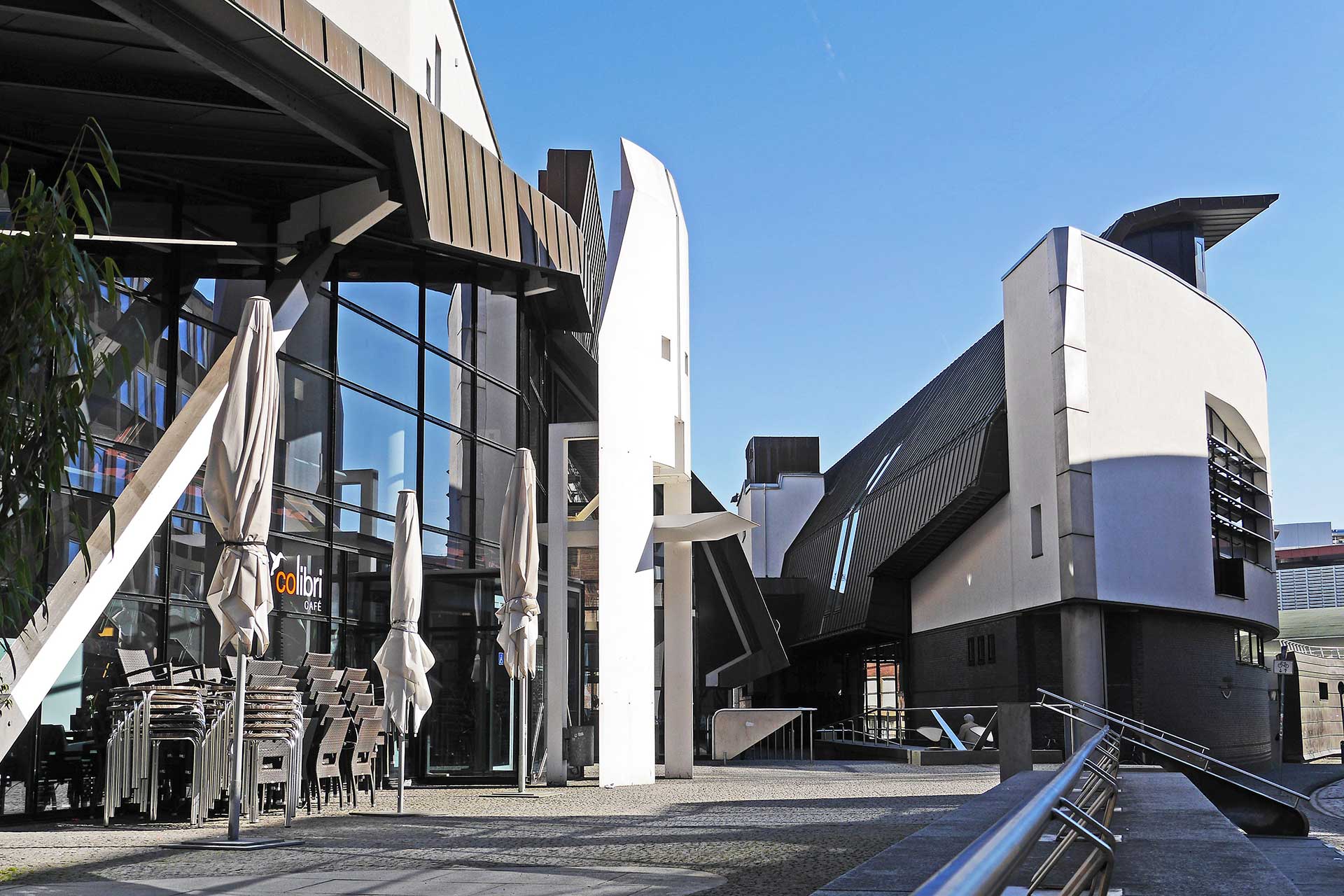Experience Münster
All Münster – or what? Münster is a city of science, art & culture, bicycle city, city of the Peace of Westphalia and, beyond that, the most livable city in the world. Experience Münster – worth it!
Münster has a lot to offer. The picturesque historic center of the city, which is over 1200 years old, with its many historic buildings, churches and museums. The modern architecture in charming contrast to this. The promenade that surrounds the city center, the parks or the Aasee, which invite you to linger. The gabled houses with elegant stores under romantic archways that invite you to store, the Prinzipalmarkt – one of the most beautiful shopping streets in Germany and much more.
Whether alone, as a couple or with the family – a visit to the most livable city in the world is always an experience. Here are just a few tips for your visit to Münster:
City tours and guided tours
City Hall
Prinzipalmarkt
The Prinzipalmarkt – the central square in the heart of Münster. Between the characteristic gabled houses and archways, the many exclusive stores and restaurants, the city life takes place. The historic town hall with its Peace Hall is also located at Prinzipalmarkt.
Paulus Dom
As an episcopal church, St. Paul’s Cathedral is the spiritual and religious center of the Diocese of Münster, founded in 805. The cathedral church captivates not only with its architecture, but also with all the depictive arts that have been and still are at the service of the liturgy throughout the centuries.
Weekly Market
Every Wednesday and Saturday morning, Münster’s large weekly market takes place in the shadow of the St. Paul´s Cathedral. Here you can find typical Westphalian food, delicacies from all over the world and market people who like to have a chat. Fortify yourself with a hot potato fritter or enjoy the hustle and bustle with a large latte.
Aasee
The Aasee is Münster’s most central recreational area and is only about a 15-minute walk from Prinzipalmarkt. Its picturesque paths attract joggers, walkers, cyclists and inline skaters to the countryside. In nice weather, pedal boats and sailboats share the waters. And around the lake cafes, restaurants and hotels provide for the physical well-being of the excursionists.
Prince Bishop’s Castle
The former prince-bishop’s palace is a residential palace built in the Baroque style between 1767 and 1787 for Maximilian Friedrich von Königsegg-Rothenfels, the penultimate prince-bishop of Münster. The architect was Johann Conrad Schlaun. Since 1954 it has been the seat of the administration of the Westphalian Wilhelms University.
Allwetterzoo
The Allwetterzoo (all-weather zoo) owes its name to the covered walkways that protect against rain or sun. In total, more than 3,000 animals of about 300 species live in the Allwetterzoo, a large part of which can be experienced “up close”. In addition, the park-like zoo grounds offer idyllically located picnic areas, restaurant and kiosks, a sunbathing lawn for the summer and beautiful playgrounds for small and large children.
Erbdrostenhof
The Erbdrostenhof was commissioned by Adolph Heidenreich Freiherr Droste zu Vischering and built by the Baroque architect Johann Conrad Schlaun between 1753 and 1757 for use as a town palace. The Erbdrostenhof is one of the most important architectural monuments in Münster. The main and highlight of the Erbdrostenhof is the banqueting hall, which extends through the entire middle building.
Botanical Garden
The Botanical Garden, located directly behind the castle, has a total area of about 5 hectares with 2000 square meters of greenhouse space. 5 out of 10 greenhouses are open to visitors all year round. Nearly 8000 different plant species are cultivated and presented in different collections and seasonal ornamental plantings.
Cycling in Münsterland
Around 4,500 kilometers of bike paths are signposted in Münsterland and lead to impressive sights, picturesque town centers, unspoiled landscapes or follow the numerous rivers. Many of these trails are mostly flat, but never boring. But the Münsterland also offers altitude in the Baumberge and the Tecklenburger Land. Over 200 circular routes are available to cyclists.
Public Library
The Municipal Library of Münster houses about 260,000 media, including about 220,000 books on an area of about 6000 square meters. The current location was opened in 1993 for the 1200th anniversary of the city. The modern architecture of the library building contrasts with the adjacent buildings of the historic city center.
Experience Münster – the city offers so much more. We have compiled only a small excerpt for you here. For further and more in-depth information on how to organize your visit to Münster, please refer to the very informative and interesting website of Münster Marketing.
Further detailed information on culture, tourism and economy in the Münsterland region can be found on the website of Münsterland e.V.













